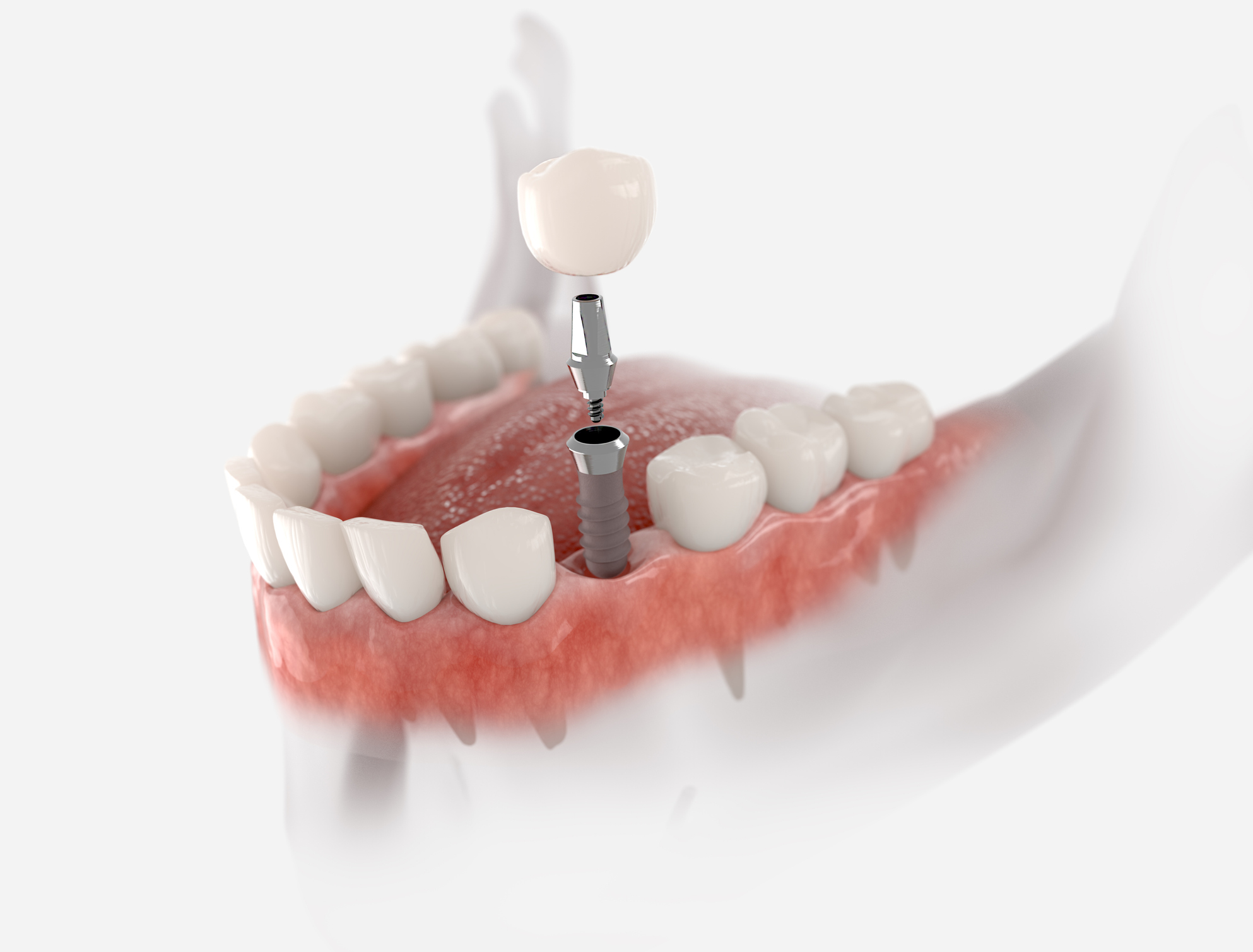Don’t let these common myths about dental implants stop you from restoring your beautiful smile! Misinformation regarding dental implants can send you on a wild goose chase as you try to separate fact from fiction. Here are the most common myths dispelled to help you in your decision-making process.
Myth: Dental implants will destroy my jaw and neighboring teeth
The truth: The thought of having a metal screw inserted into your jaw can be unsettling. What will happen to your jaw and surrounding teeth? The reality is that dental implants have been in use for over 40 years and tout a 95% success rate. The implant is designed to integrate with your jaw bone and help the bone maintain its integrity, which may help prevent future tooth loss.
Myth: The dental implants will be very noticeable compared to my natural teeth.
The truth: Many patients considering dental implants believe that a drawback to getting implants is that their new teeth will be very obvious and make their existing teeth look unnatural. Advances in technology enable production of crowns that are specifically designed to match your existing teeth, right down to their shape and color. These crowns utilize porcelain with metal which more accurately reflects the composition of natural teeth. The result is the restoration of your gorgeous, natural looking smile.
Myth: Caring for dental implants is a lot of work.
The truth: Dental implants are manufactured to behave just like their natural counterparts, the roots of your natural teeth. The titanium screw is sealed below the crown, just as your roots lie below your teeth. The biggest difference between your natural teeth and the crown portion of your implant is that the implanted teeth are stain resistant. It is always important to maintain good oral hygiene and follow the recommendation of your dental professional to keep your implants and natural teeth healthy. Most patients report that they treat their dental implants exactly the same as their natural teeth; no additional work is required.
Myth: I am too old for dental implants.
The truth: Patients can be considered too young for dental implants if they are still growing and their jaw bones are not yet fully developed. The great news is that no one is ever too old for dental implants! If you are wondering if you are a potential candidate for dental implants, your dental professional will perform a thorough examination of your teeth and gums and gather your prior medical history. This wi;; help them determine whether you are a qualified candidate. It is unusual for a patient to be considered ineligible for dental implants. Certain underlying diseases, such as bleeding disorders and uncontrolled diabetes, may negatively impact your eligibility. It is important to report all current medical issues to your dentist to help ensure a successful dental implant experience.
Myth: Dental implants are too expensive for my budget.
The truth: While bridges and dentures may seem like more immediately budget-friendly options to restore your smile, the reality is that their maintenance and durability is more complicated and not nearly as long-lasting a solution. Many patients are not aware that a full set of high-quality dentures can equal the cost of dental implants. The expected life-span of bridges and dentures is 10-15 years according to industry reports. In addition to replacement costs, patients will have to factor in adhesives and cleansers for the life of those dental devices. Dental implants require no replacement and require nothing more than maintaining good oral hygiene. They are made to last and easy to care for.
Separating these five myths from the truth will put you on the fast track in determining the right path to restoring your smile and self-confidence! To get started, contact a dental professional for a consultation.


